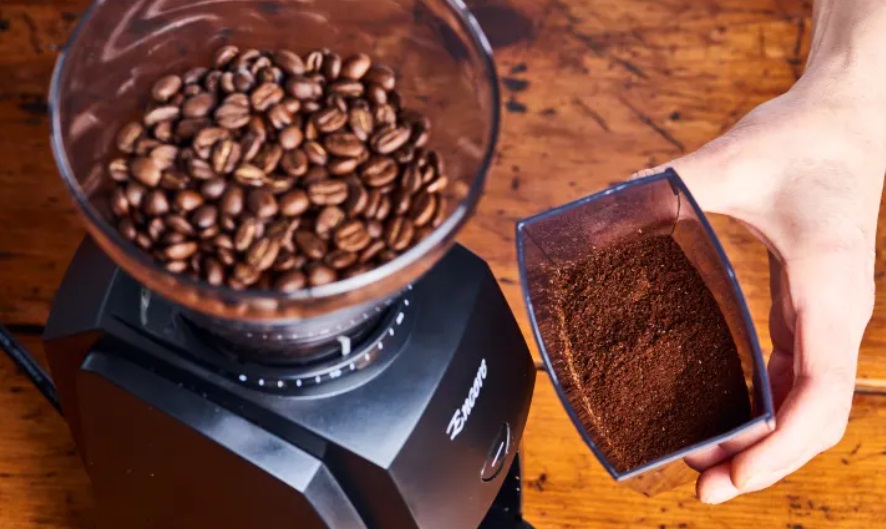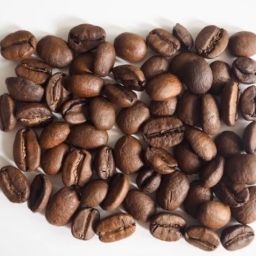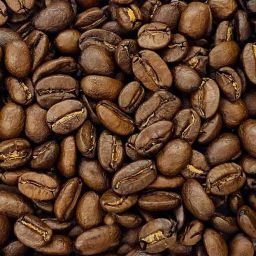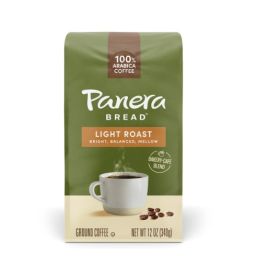
Medium roast coffee strikes a delightful balance in the coffee world. It’s where the coffee beans turn a rich, medium brown, boasting a surface that’s smooth and free from oil. This roast level is famous for delivering a perfect equilibrium of flavor, acidity, and body. It’s neither too light nor too dark, making it an ideal choice for those who appreciate a coffee that delivers complexity without overpowering the palate.
Key Takeaways on Medium Roast Coffee
- Distinct Flavor Profile: Medium roast coffee is known for its remarkable balance of sweetness and body. This roast brings out a pleasant range of flavors that can include hints of chocolate, caramel, and subtle fruitiness, making every sip a satisfying experience.
- Ideal Caffeine Content: If you’re looking for a coffee that offers a moderate caffeine kick without the jitters, medium roast is your go-to. It provides just enough caffeine to energize your day in a balanced manner.
- Versatility in Brewing: One of the great joys of medium roast coffee is its versatility. Whether you’re pulling a shot of espresso or setting up a cold brew, this roast adapts beautifully to different brewing methods, each method bringing out unique aspects of its flavor profile.
- Best Practices for Storage and Preparation: To keep your medium roast coffee tasting its best, store it in an airtight container away from light and heat. When brewing, pay attention to grind size, water temperature, and brewing time to optimize the extraction of those delightful flavors.
Understanding the Flavor Profile of Medium Roast Coffee
Medium roast coffee is all about harmony. This roast level is renowned for its balanced flavor, body, and acidity, making it a standout choice for those who appreciate a coffee that’s just right—not too sharp and not too flat. The flavor profile of medium roast is a beautiful symphony of sweetness and richness, with tasting notes that often include:
- Nuts: Imagine the subtle crunchiness of almonds or the creamy taste of cashew that adds a comforting warmth to your coffee.
- Chocolate: There’s often a hint of rich, dark chocolate that gives the coffee a luxurious depth.
- Fruits: On the fruitier side, you might detect the brightness of berries or the crispness of apples, adding a light, refreshing layer to each sip.
The Science Behind Roasting: Achieving the Medium Roast
The creation of medium roast coffee is a precise art that balances temperature and timing to unlock the bean’s potential. This process typically involves roasting the beans to temperatures between 410-430 degrees Fahrenheit. At this stage, the beans develop their signature medium brown color without the oily sheen that characterizes darker roasts.
During roasting, several chemical changes occur within the beans:
- Maillard Reaction: This reaction between amino acids and reducing sugars not only darkens the color of the beans but also develops new flavors and aromas that are quintessential to medium roast’s appeal.
- Caramelization: Sugars in the coffee beans start to caramelize, contributing to the coffee’s sweetness and the complexity of its flavor profile.
How Medium Roast Coffee Compares to Light and Dark Roasts
Exploring the world of coffee roasts can feel like a tasting tour—from the light and zesty to the deep and bold. Medium roast coffee sits comfortably in the middle, offering a balance that many coffee lovers cherish. Here’s how it compares to its lighter and darker counterparts:
Taste: Light roasts often exhibit a sharper, more acidic flavor that highlights the original characteristics of the coffee bean. Dark roasts, on the other hand, are bold and rich, with a pronounced bitterness that can overshadow the bean’s natural flavors. Medium roast provides a harmonious balance, offering richness without overpowering, and enough body to be versatile across brewing methods.
Acidity: Light roasts are typically more acidic, which can lead to a brighter cup with more pronounced floral notes. Medium roasts reduce this acidity slightly, making the coffee smoother. Dark roasts go even further, often losing much of the acidity, resulting in a smoother yet sometimes flatter taste.
Caffeine Content: Contrary to popular belief, the caffeine content across roast levels is relatively similar; however, light roasts have slightly more caffeine by weight since they are less dense than darker roasts.
Brewing Methods: Light roasts perform well with methods that highlight their delicate flavors, like pour-over or AeroPress. Dark roasts are great for espresso, where their boldness can shine through milk and sugar. Medium roasts are incredibly versatile, ideal for a range of methods from drip coffee makers to French presses and even cold brews.
Brewing the Perfect Cup of Medium Roast Coffee
To truly enjoy the unique qualities of medium roast coffee, your brewing method and technique need to be just as balanced as the roast itself:
- Grinding: The grind size should match your brewing method—medium grind for drip coffee makers, coarser grinds for French presses, and finer grinds for espresso. This ensures optimal extraction and flavor.
- Water Temperature: Ideal brewing temperatures are between 195 to 205 degrees Fahrenheit. Too hot, and your coffee may taste burnt; too cool, and it might be under-extracted.
- Brewing Technique: Each brewing method can highlight different aspects of medium roast coffee. For instance, using a drip coffee maker will typically offer a clean and consistent flavor, while a French press can bring out a richer body due to its immersion brewing method.
Choosing the Right Medium Roast Coffee
Selecting the ideal medium roast coffee involves understanding your own taste preferences and a bit about the origins of the beans:
Origin Considerations: The origin of coffee beans significantly affects their flavor profile. Beans from Latin America typically have a crisp and fruity flavor, ideal for those who enjoy a vibrant cup of coffee. African beans often boast floral and berry-like notes, providing a more exotic taste. Meanwhile, Asian coffee beans are known for their earthy and woody flavors.
Brand Recommendations: Different brands specialize in various roast levels and source their beans from diverse regions. Some well-known brands that consistently provide high-quality medium roast coffee include Coffee Bros. and Coffee Hero, each known for their unique blends and commitment to quality. These brands cater to a wide range of flavor preferences, from those who enjoy subtle, smooth flavors to those who prefer a more pronounced, rich cup.
Taste Preferences: When choosing a medium roast, consider whether you lean towards a sweeter, more caramel-like flavor or if you prefer something with a bit more bite, like a coffee with nutty or chocolatey undertones. Some brands might also offer specialty blends that combine characteristics from multiple origins, providing a complex and layered taste experience.
FAQs
What is the best temperature for brewing medium roast coffee?
The optimal temperature for brewing medium roast coffee is between 195 to 205 degrees Fahrenheit. This range ensures that the coffee’s flavors are fully extracted without burning the beans, which can result in a bitter taste.
How does the caffeine content in medium roast compare to other roasts?
The caffeine content in medium roast coffee is similar to that of light and dark roasts when measured by weight. Differences in caffeine content are minimal among the roast levels and are more influenced by the brewing method and the amount of coffee used.
Can medium roast coffee be used for espresso?
Yes, medium roast coffee can be used for espresso. It provides a balanced espresso shot with enough depth and complexity to be enjoyed on its own or as a base for other espresso-based beverages. Medium roast is versatile, making it suitable for both espresso and other brewing methods.
Final Thoughts
Medium roast coffee holds a special place in the coffee world, striking the perfect balance between the light and dark roasts. It combines the best of both worlds, offering enough body to satisfy those who enjoy a richer cup, yet retaining enough of the beans’ inherent flavors to appeal to those seeking complexity and nuance. This makes it an incredibly popular choice among coffee enthusiasts.
The versatility of medium roast coffee is unmatched. It can be brewed using a variety of methods, from classic drip to espresso, and even cold brew, each method bringing out different facets of its rich and balanced flavor profile. This adaptability makes it a staple in any coffee lover’s repertoire.
Moreover, medium roast coffee is approachable for both newcomers to the coffee scene and seasoned drinkers. Its balanced caffeine content ensures you can enjoy a cup (or two) without the extremes of too much or too little stimulation. Whether you’re looking for a comforting morning brew or a base for a robust espresso, medium roast coffee is a reliable and rewarding choice.









